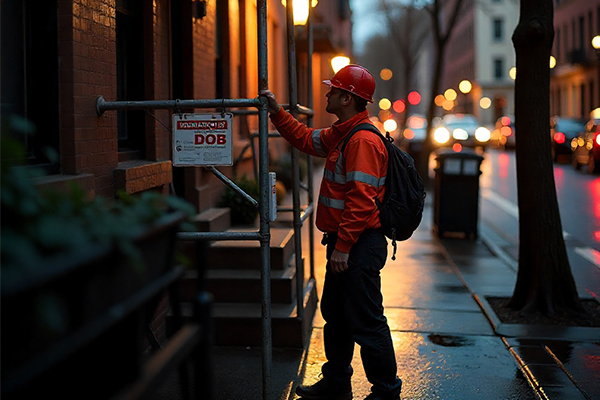What is a DOB violation—and why it matters
A DOB violation is issued when a building or job site does not comply with NYC Building Code, Zoning Resolution, or related safety rules. Open violations can trigger fines, stop‑work orders, difficulty with CO/LOP, and can block sales or refinancing until closed out.
Common types of DOB violations
- Work without a permit / illegal conversions: Construction or occupancy changes completed without approvals.
- Failure to maintain / safety hazards: Missing guards, blocked egress, inadequate lighting or signage.
- Facade & FISP issues: For buildings over six stories, missed filing or unsafe conditions.
- Administrative / paperwork: Missing special inspections, as‑built drawings, or sign‑offs.
| Class | Severity | Typical Action |
|---|---|---|
| A | Non‑hazardous | Correct by cure‑by date; provide proof |
| B | Hazardous | Expedited correction; schedule inspection |
| C | Immediate hazard | Correct immediately; possible vacate/stop‑work |
How to remove a DOB violation (step‑by‑step)
1) Identify the exact violation
Pull the violation via the DOB system (BIS/DOB NOW) using the address or BIN. Note the issuing unit, violation class, and cure‑by date.
2) Scope the fix
Engage licensed pros (PE/RA, LMP, LSE, GC) to develop the correction plan. Determine whether permits, drawings, or special inspections are required.
3) File & obtain approvals
Submit applications (DOB NOW: Build/Safety), drawings, TR forms, and any tenant protection plans. Track objections and resolve with targeted resubmissions.
4) Perform corrective work
Complete field work to code. Keep dated photos, delivery tickets, and inspector sign‑in logs.
5) Request inspections & sign‑offs
Schedule DOB inspections as required (construction, electrical, plumbing, facade). Ensure special inspection reports are uploaded and associated.
6) Close out & pay any penalties
Submit Certificates of Correction/Letters of Completion. Pay penalties/late fees if assessed. Verify the status shows Closed or Dismissed.
Preventing future DOB violations
- Use licensed contractors and file permits for all applicable work.
- Keep FISP cycles, boiler, elevator, and sprinkler tests on calendar reminders.
- Maintain clear egress and required life‑safety signage at all times.
- Document everything—photos, permits, inspection reports, and letters.
Frequently asked questions
How long does DOB violation removal take?
Timelines vary by scope and agency review. Simple administrative cures may resolve in days; filings with plan review and inspections can take weeks.
Can I sell or refinance with open violations?
Many lenders and buyers require violations to be closed or escrowed. Clearing them beforehand protects valuation and avoids delays at closing.
Do I always need permits to correct a violation?
Not always. Some maintenance items are minor. However, most construction, plumbing, electrical, and occupancy changes do require permits.
